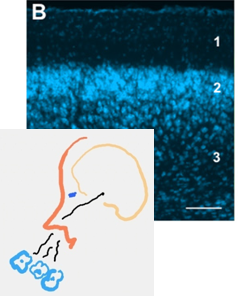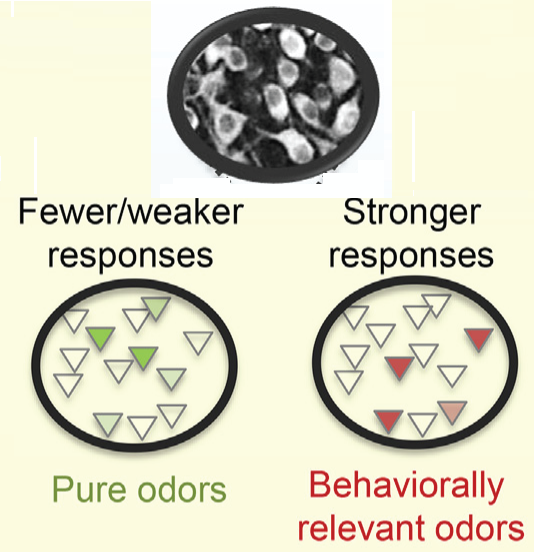Research Interests
Neural Networks
Modeling & Analysis
Neural Encoding
In the Olfactory System
& Cortical Areas
Machine Learning
Algorithm Developing & Data Analysis
Education
Ph.D. with Honor
In Neural Computation,
The Hebrew University of Jerusalem.
In collaboration with
The Center for Theoretical Neuroscience,
Columbia University
M.sc. in High Energy Physics
The Hebrew University of Jerusalem.
Visiting student at
University of Amsterdam.
B.sc. in Mathematics & Physics,
Einstein Institute of Mathematics &
Racah Institute of Physics
The Hebrew University of Jerusalem.
Website design: Merav Stern and Elran Bor
Merav Stern
Theoretical Neuroscience Research
News
Happy 2021!
Filled with hope to meet in person.

Neural Network Studies
Numerical Cognition Based on Precise Counting with a Single Spiking Neuron - Read the paper
Rapp, H., Nawrot, M. P., Stern, M.

A Transformation from Latency to Ensemble Coding in a Model of Piriform Cortex - Read the paper
Stern, M., Abbott, L.F., Franks K.,

Numerical Functional Plasticity of Odor Representations During Motherhood - Read the paper
Vinograd A.*,Fuchs-Shlomai Y.*,Stern M.,Mukherjee D.,Gao Y., Citri A.,Davison I.,Mizrahi A.

Transition to Chaos in Random Networks with Cell-Type-Specific Connectivity - Read the paper
Aljadeff, J.*, Stern, M.*, Sharpee, T.

Dynamics of Random Neural Networks with Bistable Units
- Read the paper
Stern, M., Sompolinsky H., Abbott L.F.

Under Review
Inferring Neural Population Spiking Rate from Wide-Field Calcium Imaging - Read the paper
Stern, M., Shea-Brown E. T., Witten D.

Plume Dynamics Structure the Spatiotemporal Activity of Glomerular Networks in the Mouse Olfactory Bulb - Read the paper
Lewis S.M., Xu L., Rigolli N. , Tariq M., Stern, M., Seminara A., Gire D.H.

Review
Network Dynamics Governed by Lyapunov Functions: From Memory to Classification - Read the paper
Stern, M., Shea-Brown, E.

Theoretical Physics and Mathematics
Eigenvalues of Block Structured Asymmetric Random Matrices - Read the paper
Aljadeff J.*, Renfrew D., Stern M.*

Fundamental Strings and Higher Derivative Corrections to d-Dimensional Black Holes.
- Read the paper
Giveon A., Gorbonos D., (Leading Author) Stern M.
Code & Notes
Calcium Deconvolution
My code for inferring neural population spiking rate from wide-field calcium imaging
Mean-Field in Random Neural Networks
Notes on Chaos in Random Neural Networks, Including their Lyaponuv Exponents
They are based class notes by Larry Abbott (equations 1-36)
I extended them to include the second half of the paper (equations 37-end)the notes
Mentoring
- Mentor at Alpha project HU, for excellent high school students in their research program towards final exam equivalent eligibility.
- Co-mentor of various Ph.D. students from Oregon University (Physics) Columbia University (Brain Science) and University of Washington (Psychology).
- Mentor at OIST computational neuroscience course, Okinawa, and at IBRO-Simons Computational Neuroscience Imbizo, Cape Town, a few weeks summer schools for graduate students.
Teaching
- Teacher assistant, Computational Neuroscience class, Columbia University.
- Lecturer, Jerusalem College of Engineering.
- Teacher assistant, Mechanics and Electricity for MD students, HU.
Volunteering
- Teacher at Yoel Program. The program supports high school drops-out towards GED.
- Teacher at The New York Academy of Sciences, Education and Public Programs
Supervising
- Supervisor and program content developer, the Youth Science Center, HU.
- Program director, New Jersey "Y" camps
- Coacher, international figure skating
